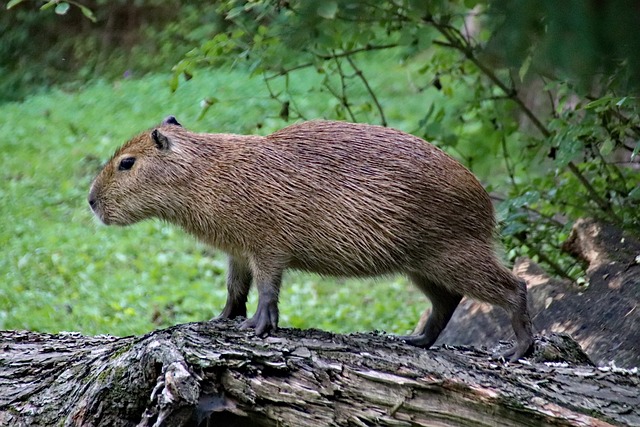Capybaras, the largest rodent in the world, are known for their social and affectionate behavior within group dynamics.
This often leads to them engaging in activities that might seem unusual to human onlookers, one of which is kissing.
Observations of capybara behavior reveal that these kisses are not an expression of romantic affection as humans might interpret it, but rather a complex social behavior with specific functions in capybara society.
These gentle giants are highly communicative through various vocalizations and physical actions. The act of kissing serves as a social glue that reinforces bonds within the group establishes hierarchies, and maintains peace among members.
It’s a behavior observed predominantly during grooming sessions, where capybaras interact closely and perform reciprocal cleaning as a form of social bonding.
Understanding why capybaras kiss involves examining their habitat, social structures, and the evolutionary advantages of such behavior.
In the wild, capybaras live in groups that can consist of anywhere from 10 to 100 individuals, depending on the space and resources available.
The kissing behavior, therefore, plays a crucial role in managing intricate social networks and ensuring the cohesiveness and survival of the capybara community.
Capybara Social Behavior
Capybaras are highly social animals, exhibiting a structured social hierarchy and engaging in mutual grooming to maintain group cohesion.
Social Hierarchy
Capybaras live in groups, and a clear social structure is apparent within these groups. Dominant individuals, typically older capybaras, control the group, leading activities such as grazing and choosing resting sites.
In contrast, younger and less dominant members show submission through body language and vocalizations to maintain harmony within the group.
Grooming Habits
Grooming is a critical interaction among capybaras, serving two main purposes: it helps to reinforce social bonds and maintain a clean coat free from parasites.
Allogrooming, the act of grooming one another, is particularly common and cements relationships between group members, often observed as a reciprocal activity.
Communication Among Capybaras
Capybaras exhibit complex communication behaviors that involve distinct vocalizations and body language signals to interact with each other.
Vocalizations
Capybaras use a variety of sounds to express themselves. They communicate through a range of vocalizations that include:
- Alarm calls: High-pitched whistles signal danger to other capybaras.
- Mating calls: A sequence of purrs and clicks are used during courtship.
The frequency and context of these sounds are critical for conveying different messages.
Body Language
Body language is another pivotal aspect of capybara communication. Notable behaviors consist of:
- Snout-to-Snout: This gesture is often interpreted as capybara “kissing” and is usually involved in social bonding or greeting behaviors.
- Posturing: Capybaras demonstrate dominance or submission through their body positions and movements.




